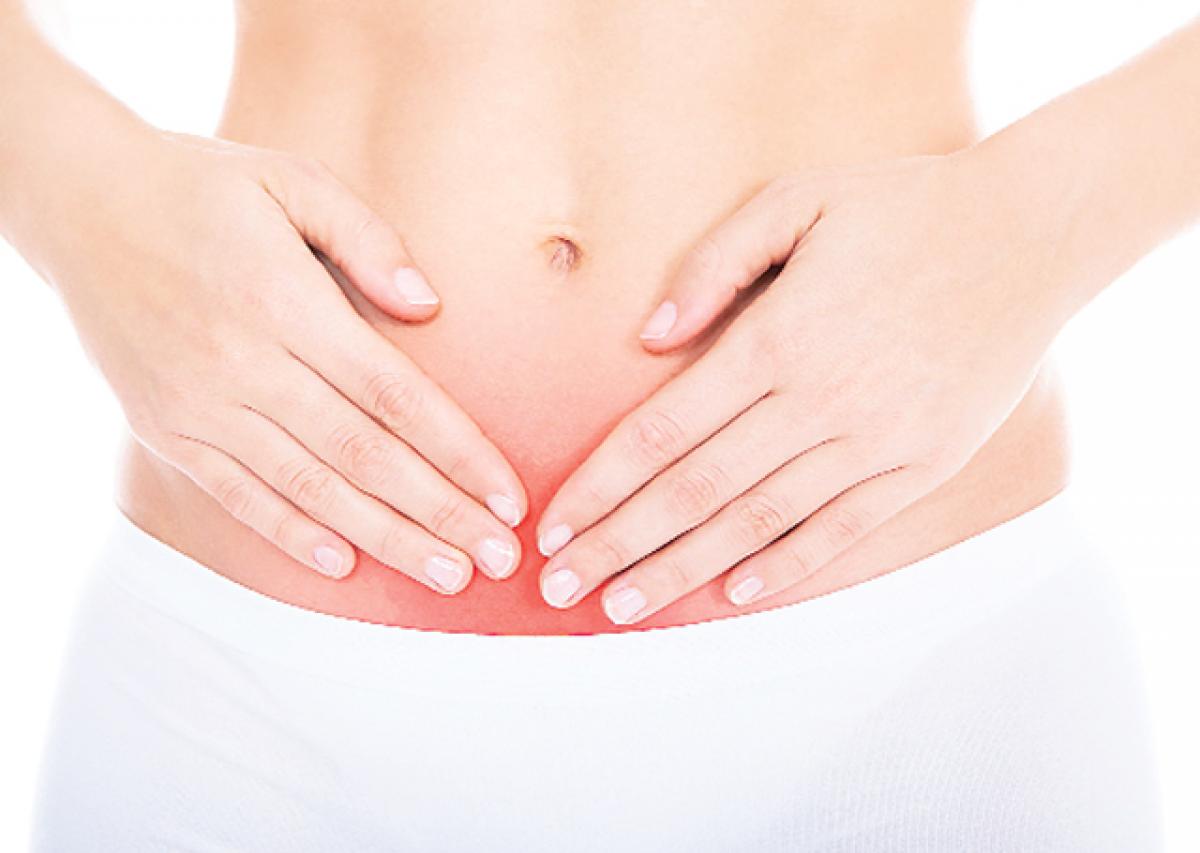Live
- GMR Airports Unveils AI-Powered Digital Twin Platform to Transform Airport Operations
- India poised to become leading maritime player: PM Modi
- Top Causes of Kidney Stones and How to Recognize Silent Symptoms
- India’s renewable energy capacity logs 14.2 pc growth at 213.7 GW
- Winter Session of Odisha Assembly adjourned sine die
- Biden calls Trump's tariff approach 'major mistake'
- After Drama Over Eknath Shinde’s Chief Minister Race, Maharashtra Cabinet Formation Faces New Tensions
- Egyptian FM, Blinken discuss recent developments in Syria
- Iran's supreme leader says Syria's developments result of US-Israeli 'plot'
- Elon Musk to Purchase $100 Million Luxury Mansion Next to Donald Trump's Mar-a-Lago, Report Reveals
Just In

Yoga Asana For Common Ailments. Stress and restless lifestyles has lead to the emergence of some common ailments complained by people of all age groups. Common ailments are diseases or other health problems that lots of people suffer from.
Stress and restless lifestyles has lead to the emergence of some common ailments complained by people of all age groups. Common ailments are diseases or other health problems that lots of people suffer from. The intensity of these ailments is sometimes so low that treatment is neglected but they trigger irritation and cause disturbances in our daily routine..When these ailments increase in severity, they demand huge medication or surgery.
When the disease is caused by simple reason, the cure has also to be as simple as that. These respond particularly well to YOGA -the traditional method developed by the saints of ancient India. The best part of yoga is that it has been into existence for more than two thousand years and it’s still going strong. Today, we can find Yoga classes or practitioners in nearly every country on earth. Yoga classes are free and frequent. The Yoga community is diverse and active. Many people happily share space for free with people who want to teach or practice. This culture of free exchange and openness is practiced throughout the world but why are we resorting to medication even for some common ailments which can be controlled easily by the practice of DAILY YOGA. Regular practice of yoga makes the body physically healthy, mentally clear and focused which keeps the stress under control. Yoga teaches to focus on breathing while holding the poses. This attention to breath is calming. it dissolves stress and anxiety.
TENNIS ELBOW-
 Lateral epicondylitis, is a painful injury caused by repetitive stress and strain to the tendons that connect the muscles to the bone at the elbow. The pain is due to tiny tears in the tendons that get inflamed. Performing a variety of non-weight-bearing yoga poses and exercises is one way to treat tennis elbow. Stretching can help ease the pain and reduce the stiffness associated with tennis elbow .
Lateral epicondylitis, is a painful injury caused by repetitive stress and strain to the tendons that connect the muscles to the bone at the elbow. The pain is due to tiny tears in the tendons that get inflamed. Performing a variety of non-weight-bearing yoga poses and exercises is one way to treat tennis elbow. Stretching can help ease the pain and reduce the stiffness associated with tennis elbow .

An effective yoga stretch is the TADASANA (Mountain pose)
It reduces the tension and improves the flexibility of forearm muscles and tendons

SCIATICA-
It is a common type of pain affecting the sciatica nerve, a large nerve extending from the lower back down the back of each leg.

EKA PADA RAJAKAPOTASANA- (Pigeon pose)
The spine is placed into extension, which effectively pushes the jelly back into the disc, relieving the stress on the sciatic nerve roots.

FROZEN SHOULDER-
Frozen shoulder can develop when you stop using the joint normally because of pain, injury, or a chronic health condition, such as diabetes or a stroke. Any shoulder problem can lead to frozen shoulder if you do not work to keep full range of motion.
Frozen shoulder Yoga exercises are slow and gentle; the movements are done with acute awareness.
.jpg)
Parvatasana- (Mountain pose)
This Yoga pose prevents and relieves stiffness in the region of shoulders. It also helps in relieving rheumatic pain. Parvatasana helps in free movement of shoulders.

PLANTAR FASCIITIS -
The pain on the underside of the heel radiates through the foot and is particularly noticeable first thing after waking. A painful inflammation of the arch tendon of the foot,plantar fasciitis is usually caused by overuse ,hence the common name ‘policemen’s heel’. If untreated plantar fasciitis can lead to a bony growth known as a heel spur, where the tendon attaches to the calcareous or heel bone. This condition is often associated with runners and dancers, where excessive stretching or landing from heights occurs on a regular basis. The most common symptoms are burning, stabbing or aching pains in the heel of the foot. One f the common causes is the presence of very tight calf muscles, which repetitively over stretches the plantar fascia

Adho Mukha Svanasana (Downward-facing dog).-
This pose helps stretch major muscles that cause pain in the disorder of the feet. Very often this will relieve or cure pain.

POOR CIRCULATION-
Poor circulation usually affects the extremities of the body –the fingers ,toes,ears and nose- and can be caused by a variety of conditions that restrict the blood flow through the blood vessels in these parts.
VIPARITI KARNI- (Legs Up The Wall Pose)-

This inverted pose uses gravity to stimulate blood circulation. This pose gives blood circulation a boost towards upward body a nd head which creates a pleasant rebalancing after you have been standing or sitting for a long time.

INDIGESTION-
Indigestion is a term used for any difficulty, pain or discomfort that occurs when ingesting food. Yoga works in a systematic manner to clear the blockages so that digestive system functions properly and you no longer suffer from indigestion.Certain yoga asana that are inverted are extremely beneficial for treating indigestion since they force your blood to flow in the opposite direction. This helps to take the strain off from your lower body and when you return to your normal position the blood rushes back, this helps to clear any blockages and also nourishes your system with a fresh supply of fresh blood and oxygen so your system rejuvenates itself and functions at its optimum level. Yoga can be used to stimulate digestion and movement along the digestive tract

UTTHITA PARSVAKONASANA- (Extended Angle Pose)
Parsva means side or flank. Kona stands for angle. Thus this is the extended lateral extended angle pose..
This yoga position help to stretch twist and squeeze the torso, improving digestion, as well as the circulation and function of the organs within this region of the body.
It also stretches your side back and arm muscles.

NECK PAIN-
Neck pain is better known as in medical terms, arises mostly from long, continuous hours of sitting in the same posture or a rough night of sleep and reduced workout.

Bal asana (child’s pose):
The bal-asana gently stretches and relaxes the shoulders, neck, back muscles. It calms the brain and helps relieve stress and fatigue. It relieves neck pain when done with head and torso supported.

BACK PAIN-
It is a common complaint among people of all ages. Poor or bad posture (especially, a forward slouch), wrong sleeping positions, . The lack of flexibility of the back which contributes to the lower back ailments increases as the body ages. To alleviate these problems some yoga asana should be practiced regularly.

Ardh matsyendrasana (Half Fish God pose)
This asana helps in corrections of spinal problems. Massages to the deep and superficial muscles of the spine and thus increasing the spinal circulatory activities. When done with ease and in a relaxed manner, it exercises the spine and adjusts any vertebrae and thereby relieves the spinal nerves from habits of carriage of daily occupation.
KNEE PAIN-

The slow, controlled physical movement of joints is helpful for Arthritis patients. It improves the blood circulation in joints, removing unwanted toxins and other waste products. But the problem in the patients is if patient tries to move his limbs & joints then pain increases so patient does not move the limbs and problem increases. So it is vicious cycle, because of pain no movements and because there is no movement, the situation becomes worse. So patient should keep doing the movements which are possible for him.
Yoga certainly helps in Arthritis. Simple asana, movements help increase the circulation in the joints and limbs. Various Asana like Basic Movement, Tadagasana, Pavanamuktasana (1 leg & 2 legs), Makarasana, Swastikasana, Bhujangasana, , Veerasana, Trikonasana, are helpful. Slow, steady and controlled movements are especially recommended. It is not advisable to maintain the asanas for long.

Bhujangasana helps to reduce knee pain.
Simple Pranayama is recommended, which involved deep breathing, special type of Pranayama with Inhalation via right nostril and exhalation via both nostrils but creating a sound of Hmm.. (Honey bee Sound) from the throat is found to be very effective in Arthritis patients.

HEADACHE-
When it comes to preventing or curing a headache, there is no substitute for a thorough, daily yoga program.

Shirshasana (headstand pose)
Inverted postures, or those where the head is lowered briefly, increase oxygen to the brain and reduce headache-causing strain.
All these asana are energy releasing as well as energy generating asana. These asana are safe, effective and powerful. The enhanced circulation and energy flow they incite will help us to feel better physically, mentally and emotionally. Of course, for these benefits to be felt, one has to practice them regularly, a few of times a day-thus bidding good bye to the most common ailments through the practice of simple but effective yoga.

© 2024 Hyderabad Media House Limited/The Hans India. All rights reserved. Powered by hocalwire.com







